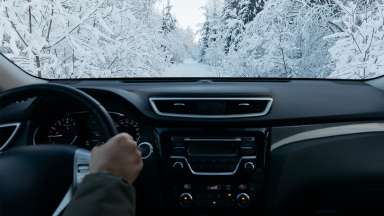Winter weather in North Carolina can be unpredictable, where a prediction of snow flurries can quickly transition into freezing rain and ice. The National Weather Service states that 75 percent of winter weather-related deaths occur on the road, either by motor vehicle accidents or by motorists being stranded with little to no resources for escape, heat, water and/or food.
“When the weather is bad and driving conditions are poor, the best bet is to stay home,” says Lt. Lemuel Hubbard from the Raleigh Fire Department.
However, if staying home is not an option, here are some tips from the fire department and the National Weather Service to consider if you must drive in these conditions:
- Make sure your car is in good running condition by ensuring that your battery, antifreeze, windshield wipers, ignition, and thermostat are all in good working order. Be sure your tires have enough tread and appropriate tire air pressure. Replace any of these items if necessary.
- If you must go out when snow and ice are on the ground, let someone know your destination and when you plan to arrive. Also take a fully charged cell phone and a charger with you.
- Remove snow and ice off all parts of your car before you drive away. Remember to remove the snow and ice also off the top of your vehicle.
- Keep your gas tank as full as possible when snow and ice are forecasted. This will not only give you added peace of mind, but it also increases the weight of your car and this will provide additional traction.
- Keep the following basic items in your car:
- Windshield scraper and brush
- Booster/jumper cables
- Tow chain or rope
- Bag of sand or salt
- Blankets
- Flashlight
- First aid kit
- Road map
- Drive slowly since even driving at posted speeds can be dangerous when snow and ice are on the road. Many vehicles will lose traction especially at higher speeds resulting in serious accident and vehicle rollovers.
- Steer your car into the skid. If your vehicle loses traction and begins to skid, steer the front tires into the direction of the skid. Never hit your brakes, as this will result in a more serious skid and spinning of the vehicle. When your vehicle begins to skid, remember to keep your cool and remain calm. Again, driving at slower speeds will help you recover from a skid successfully.
For more information, check out these resources:


